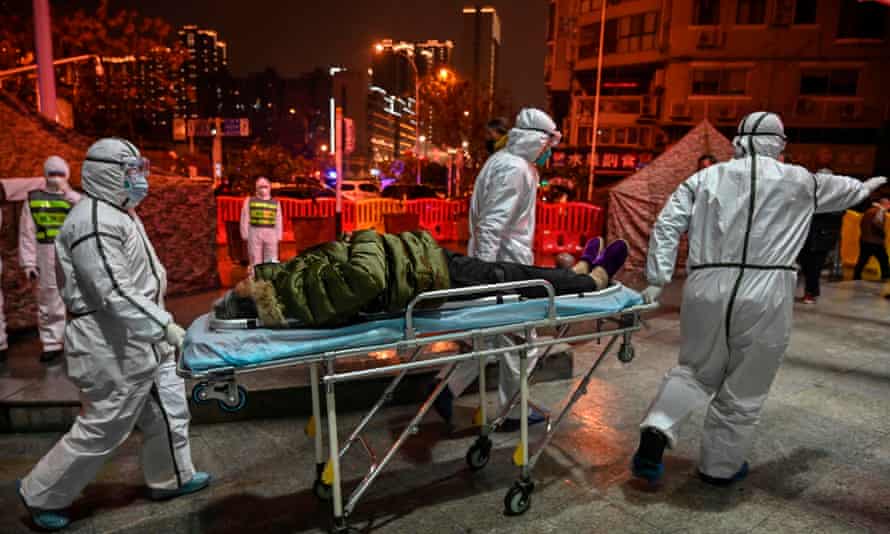Comprehending COVID-19
"Where an epidemic is first detected does not necessarily reflect where it started.""Research conducted in China and elsewhere since the COVID-19 pandemic began has shown that a range of animals -- including wild and farmed species -- are susceptible to infection, but when and where SARS-CoV-2 spilled over to humans, and from which animal, remains unknown."World Health Organization report"Asymptomatic people are probably especially important because from the studies that have been done so far people who have been asymptomatically infected, their antibody levels are lower and they may not be high enough to confer protection [without receiving an inoculating shot].""It's very misleading to discuss the overall case fatality rate because there is so much variability between populations and age groups.""It tends to be the case that viruses that cause really, really high death rates are not well adapted to spread in humans."Dr.Matthew Miller, associate professor, infectious diseases and immunology, McMaster University, Hamilton"We should pause to remark that COVID-19 is extraordinarily successful epidemiologically, precisely because it is not extremely lethal.""[Ebola, by contrast] is a rather stupid virus: It kills its host -- and itself == too quickly to spread far enough to reshape other species' life-ways to cater to its needs."Dr.Samuel Paul Veissiere, Psychology Today, cognitive scientist, assistant professor of psychiatry, McGill University
 |
 |
Chinese President Xi Jinping in Wuhan March 2020
Xie Huanchi Xinhua / eyevine / Redux
|
"As Washington falters, Beijing is moving quickly and adeptly to take advantage of the opening created by U.S. mistakes, filling the vacuum to position itself as the global leader in pandemic response. It is working to tout its own system, provide material assistance to other countries, and even organize other governments.""The sheer chutzpah of China’s move is hard to overstate. After all, it was Beijing’s own missteps—especially its efforts at first to cover up the severity and spread of the outbreak—that helped create the very crisis now afflicting much of the world. Yet Beijing understands that if it is seen as leading, and Washington is seen as unable or unwilling to do so, this perception could fundamentally alter the United States’ position in global politics and the contest for leadership in the twenty-first century."Kurt M. Campbell and Rush Doshi
 |
| A man with what was then a mystery illness is brought into a Wuhan hospital in January this year. Photograph: Héctor Retamal/AFP/Getty Image |
There is relief on the horizon. Vaccines which are rolling out and beginning to be distributed since gaining official permission to proceed. Inoculations are taking place targeting the most vulnerable within society with plans to expedite vaccines for distribution and vaccinating entire populations. That may take as long globally as the length of time the world has been coping with trying to contain the outbreaks. Which is good reason to understand that populations must continue to distance themselves physically, wear masks, observe good hygiene and avoid crowded indoor spaces.
In the interim, other treatments of COVID are being explored. As long as the danger of contracting COVID continues, alternate treatments fill a necessary gap, and may in fact continue to have applications useful to ward off the effects of COVID. Among them convalescent plasma which consists of using blood from people who have recovered from illness to aid others by using their protective antibodies as a new COVID-19 therapeutic protocol.
Lastly, there is 'proning', considered effective in hospitals by reducing the high demand for ventilators with the process of turning a sick individual from their back to their stomach for improved oxygenation.
As far as the World Health Organization is concerned, COVID-19 should be considered a test run. A serious virus that has managed to upturn the world as we know it, but not as lethal as a viral pestilence can conceivably become. The WHO has warned and continues to warn of a severely deadly strain of virus that may eventually arrive. That the discoveries made by science in coping with and trying to fully comprehend the SARS-CoV-2 virus causing COVID may better prepare us for the Big One.
"This is coming at the virus from a different way. It's almost boosting the patient's own immune system by giving them additional antibodies [through administering convalescent plasma]. Like a foot soldier to essentially fight off the infection.""We're 100 percent reliant on people who have had the infection and have recovered to become blood donors."Dr.Donald Arnold, associate professor of medicine, director, McMaster Centre for Transfusion Research

Labels: Europe, Global Pandemic, Research, SARS-CoV-2, Studies, United States, Vaccines, WHO, Wuhan

0 Comments:
Post a Comment
<< Home